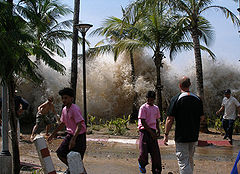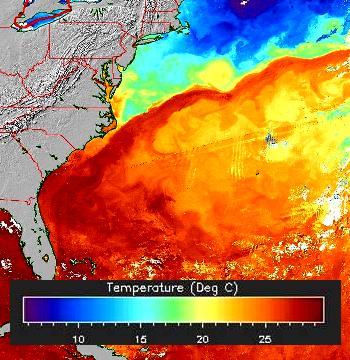The Glory and Wonder of Physical Oceanography
or
Why Take
CLIM 412/CLIM 512/CLIM 512/EVPP 505?
You Want To
Students primarily interested in marine biology or aquatic life sciences will learn how the physical behavior of the sea strongly influences the distribution, behavior, and evolution of life in the sea.
Students primarily interested in atmospheric sciences will gain insight into the fundamental ocean influence on weather and climate.
Students of geography and remote sensing will learn about the largest and least accessible geographic features on the planet.
Physical oceanography is a fascinating subject in its own right. Many strange and surprising features lurk below the surface of the sea, or even hide in the surface of the sea, yet these features have been revealed through careful observation, application of physical law, and mathematical and computational analysis.
You Have To
CLIM 412 is required for the Oceanography and Estuarine Science concentration of the Earth Sciences BS degree. The concentration requires physical, chemical, and geological oceanography so that students can get a comprehensive view of the sciences of oceanography. It also satisfies the core requirements of the Ocean and Estuarine Science Minor
CLIM 412 satisfies elective credit for Atmospheric Sciences BS degree.
CLIM 512 satisfies a core requirement of the Climate Science MS and the Hydrosphere requirement for the Earth Systems Science MS.
Satisfies elective credit for Environmental Science and Policy MS as EVPP 505.
You Are Able To
CLIM 412 is an introductory class. Students do not need prior exposure to physical oceanography. The emphasis of the class will be on fundamental physical concepts which explain the main descriptive features of the oceans. While simple mathematical formulas are used to explain the concepts, most of the math consists of basic algebra.
On Second Thought, How About CLIM 712 Instead?
For graduate students looking for an introductory oceanography course with more extensive use of calculus, see CLIM 712.
[Return to Top of Page]The Ocean Seen Through The Lense of Physical Oceanography

Everyone knows of the vastness of the sea, its titanic power, and the speed with which it appears to lurch from a calm sleep to an implacable rage. This course is for students who want to understand the science of the sea's motions: how simple principles can be applied to observations to gain insight into ocean phenomena ranging from an unseen ripple to a devastating tsunami.
2004 Indian Ocean tsunami strikes Ao Nang, Thailand; photo from Wikimedia Commons.

The sea is often thought of as the analogue of a theatrical stage, with marine life playing the interesting roles. Here we will examine the actions of that stage itself. The water of the sea has its own intricate anatomy, as the above satellite infrared image makes clear. We can see a ribbon of warm water that appears to shoot northward from the American coast, spinning off tendrils of warmer or cooler water from its flanks. These features are determined in part by the ocean's currents. The currents, temperature and salinity patterns of the sea strongly influence the biology and chemistry of the ocean and the climate of the entire planet. In this class we will study how these patterns are formed and how they interact with the biosphere and the atmosphere.
